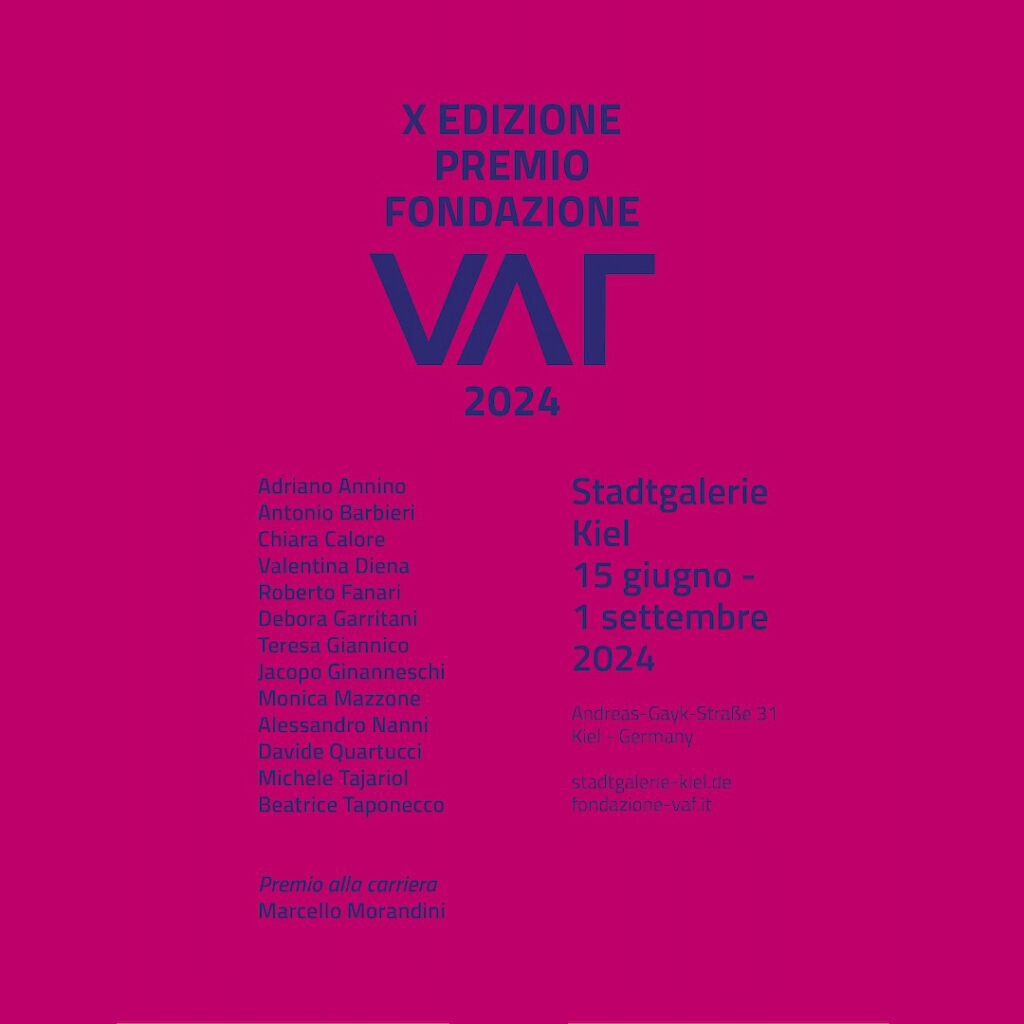CURRICULUM VITAE
Denis Viva
Born in Cividale del Friuli (Italy)
on 16 August 1979
Contacts
e-mail [email protected]
academia.edu
http://uniud.academia.edu/DenisViva/About
Associate Professor, Department of Humanities, University of Trento
Member of the Doctoral School in European Culture, Department of Humanities, University of Trento
Director of Palinsesti. Contemporary Italian Art On-line Journal, published by TESEO – University of Trento. https://teseo.unitn.it/palinsesti
Member of the Réseau International pour la Formation à la Recherche en Histoire de l’Art. https://www.proartibus.org/membres
Member of the Kuratorium – VAF-Stiftung Foundation
Projects
June 2023
XXI École de printemps – RIFHA
Organization of the XXI École de printemps “Art and Science. Materiality and Mediality”, University of Trento. Curated by Denis Ribouillault, Eva Struhal and Denis Viva.
October 2022 – December 2024
Officina Espositiva. Principal Investigator
Project supported within the triennal plan of the Department of Humanities, University of Trento
April 2020 – August 2022
La Storia dell’arte nelle scuole secondarie superiori. Principal Investigator
Project supported by the CeASUM, University of Trento. Seminars and workshops on the teaching of Art History in High Schools.
2018-2019
VARIA. Contributor for the Region Trentino Alto Adige
Census of the video-archives in Italy for the web database https://varia.cultura.gov.it/
19 April 2013 – 18 April 2016
CAPTI. Investigator of the Research Unit
Project supported by the Grant “FIRB 2012” of the Italian Ministry for University and Research (Ministero dell’Istruzione, dell’Università e della Ricerca). “Spreading Visual Culture: Contemporary Art through Periodicals, Archives and Illustrations”: the project focused on the history and development of Italian art periodicals from 1945 to 1980 by means of publications, conferences and the digitization of these reviews on a web database www.capti.it
Education
1998-2004
Master’s Degree in Art History and Preservation of Cultural Heritage, University of Udine
Dissertation supervised by prof. Alessandro Del Puppo: “The Concept of Dynamism in Umberto Boccioni’s Sculpture and Painting”. The thesis considered the scientific sources of Boccioni’s theory of dynamism in Art
2001-2002
Socrates Program, Universidad Complutense de Madrid.
2005-2008
PhD in Contemporary Art History, University of Udine
Dissertation supervised by prof. Flavio Fergonzi: “Post-avantgarde in Italy. The Image of Painting at the beginning of Postmodernism 1977-1982”. The Thesis delved into the so-called “return to painting” which characterized the milieu of the Italian neo-avantgarde between the 1970s and the 1980s, by analyzing the careers of some Italian young painters and the development of art theory.
Research experience
1 January 2017 – 31 November 2018
Temporary Research Associate
Department of Humanities and Cultural Heritage, University of Udine. “Atlas of Italian Art Critics 1980-2000”: the project aims at editing the first anthology concerning the debate on Italian Art in the age of Postmodernism.
19 April 2013 – 18 April 2016
Research Fellow (R.T. D., tipo A)
Department of Humanities and Cultural Heritage, University of Udine.
1 April 2010 – 31 July 2010
Temporary Research Associate
Museo del Novecento, Milan, and Department of Cultural Heritage, University of Udine. “Cataloguing the collection of the Contemporary Art Museum of Milan: 100 works from 1945 to 1975”: the project resulted in the writing of art-historical entries for approximatively 100 works belonging to the collection of the Museum.
September 2008 – January 2012
Author of the catalogue raisonné
Fondazione Adolfo Pini, Milan. Study and publication for the catalogue raisonné of the painter Renzo Bongiovanni Radice.
Teaching experience
since December 2018
Associate Professor
Contemporary Art History, Department of Humanities, University of Trento
Bachelor’s Degree in “Cultural Heritage”
2021/2023: European and American Art from 1860 until 1970
Master’s Degree in “Art”
2021/2022: The artist as curator: from 1960 to today
2021/2022: Abstract Art in Italy. Two case studies: Giacomo Balla and Fausto Melotti
2022/2023: Sculpture and site specificity after 1968
Master’s Degree in “Art History and Museum Studies”
2022/2023: Institutional Critique, from B.M.P.T. to Thomas Hirschhorn
December 2018 – December 2021
Assistant Professor
Contemporary Art History, Department of Humanities, University of Trento
Bachelor’s Degree in “Cultural Heritage”
2019/2021: European and American Art from 1860 until 1970
Master’s Degree in “Art History”
2018/2019: a critical revision of the Trans-avantgarde: its myths, its strategies, its art theory
2019/2020: along with Visiting Professor Micheal Zimmermann, on Still Life and subjectivity
2019/2021: Global Art since 1968
2020/2021: Theory and display of the exhibition on Italian Art of the Fascist Era
2020/2021: Contemporary Sculpture between Fetishism and Participation: Unmonumental and Relational Art
February- March 2018
Seminar Speaker
Course of Contemporary Art History held by prof. Flavio Fergonzi, Scuola Normale Superiore of Pisa
2017/2018: Seminars on: Environmental Painting in the 1970s; A Critical analysis of a text: The Italian Trans-avantgarde by Achille Bonito Oliva
September 2014- September 2018
Adjunct Professor
Contemporary Art History, Department of Humanities, University of Trento
Bachelor’s Degree in “Cultural Heritage”
2014/2017: European and American Art from 1750 until 1940
2017/2018: European and American Art from 1860 until 1970
Master’s Degree in “Art History”
2014/2015: The reception of Russian and American Formalism and the debate on Abstract Art in Italy soon after the Second World War
2015/2016: The birth of Arte Povera and the Germano Celant’s early theory of Art
2016/2017: Umberto Boccioni’s Plastic Dynamism: theory and practice between 1912 and 1914
2017/2018: Roy Lichtenstein’s early pop period and Formalist Modernism
September 2016- September 2018
Adjunct Professor
Museum Practices in Contemporary Architecture, Department of Humanities and Cultural Heritage, University of Udine
Bachelor’s Degree in “Cultural Heritage”
2016-2019: History of Museum Architecture and history of art display from 1800 until 2010
May 2014 – March 2017
Member of the Faculty Council
Doctoral School in Audiovisual and Art Historical Studies, Department of Humanities and Cultural Heritage, University of Udine.
19 April 2013 – 18 April 2016
Research Fellow (R.T. D., tipo A)
Contemporary Art History, Department of Humanities and Cultural Heritage, University of Udine
PhD School in “Art History”
2013-2014: Seminar on Remediation and Digitization for Contemporary Art historical resources
2015-2016: Seminar on Giorgio De Chirico’s Reception from Modernism to Postmodernism
Master’s Degree (Second Level) in “Cultural Heritage Preservation”
2013-2014: Seminar on History of Curatorship and Museum Practice in Contemporary Art
Master’s Degree (First Level) in “Art History and Heritage Preservation”
2013-2014: Introduction to the course of Contemporary Art History held by prof. Flavio Fergonzi
Master’s Degree (First Level) in “Science of Audiovisual Heritage and New Media”
2014-2015: Global Contemporary Art from 1900 to 1989
2015-2016: Global Contemporary Art from 1900 to 1989 with a focus on filmic medium.
2005-2009
PhD Student and Lecturer
Contemporary Art History, Department of Cultural Heritage, University of Udine
2004-2005: lectures on Italian Art of the 1980s, Contemporary Art History course held by prof. Flavio Fergonzi
2006-2007: lectures on European Art of the 1970s and the 1980s, Contemporary Art History course held by prof. Alessandro Del Puppo
2007-2008: lectures on Marcel Duchamp’s Reception, Contemporary Art History, course held by prof. Alessandro Del Puppo
2008-2009: lectures, “Andy Warhol and Marcel Duchamp: revisiting the artists’ role”, Contemporary Art History, held by prof. Alessandro Del Puppo
Curatorial and Museum experience
April 2016- July 2018
Curator of Paradoxa
Annual exhibition on Far East Asian Art, Museo d’Arte Moderna e Contemporanea, Casa Cavazzini, Udine. 2016: Japanese Contemporary Art; 2017: Chinese Contemporary Art; 2018: South Korean Contemporary Art.
October 2016-January 2017
Curator of the 16a Quadriennale di Roma
Other Times/ Other Myths, Palazzo delle Esposizioni, Rome. Section Peripherals on the Italian artists who live in an Italian geographical periphery.
October 2015-November 2017
Curator of Ibidem
Project on Contemporary Art as a form of reframing places, Fondazione Ado Furlan, Pordenone.
March 2012- February 2014
Museum Curator of Temporary Exhibitions
Mart, Rovereto. Curating the exhibitions: Fausto Melotti, Contemporary Art and Tourism, the Mart’s Collection. Production of the exhibition projects by Jean-Luc Nancy on Contemporary Portrait, David Claerbout’s solo show, the exhibition on Landscape by Gerardo Mosquera
October 2013- January 2014
Entries’ Author
Historical study and cataloguing of the collection of Museo Novecento in Florence
2008-2012
Chief Curator of Palinsesti
Annual exhibition on Contemporary Art, San Vito al Tagliamento. 2008: Knot/net on the web and the materiality of Art; 2009: Precarious Structures: on Contemporary Art Display as a device for negotiations; 2010: Storyboard: on Images and Narration; 2011: Realization of a collection of regional Contemporary Art for San Vito al Tagliamento; 2012: Sound Boxes, on Sound Art and Installation www.palinsesti.org
2010
Entries’ Author
Historical study and scientific cataloguing of the collection of Museo del Novecento in Milan
2007-2008
Entries’ Author
Historical study and cataloguing of the collection of the Galleria Civica d’Arte Moderna e Contemporanea of Turin
2006-2008
Assistant curator of Palinsesti
Annual exhibition of Contemporary Art, San Vito al Tagliamento, www.palinsesti.org
Third Mission
2019
Denis Viva, “Laura Iamurri. Giulio Paolini”, in L’indice del mese, february 2019 (review)
Denis Viva, “L’odore assordante del bianco”, Unitrentomag, 22 February, https://webmagazine.unitn.it/eventi/55880/l-odore-assordante-del-bianco (review)
Conference “Light as medium”, for “Natale di luce”, Fondazione Caritro, Rovereto
2021
Interview, A conversation with Denis Viva on a critical re-reading of the Transavanguardia, with Bensplainer, https://porcile.org/post/671389279058034688/conversation-denis-viva-transavanguardia , September.
2022
Denis Viva, “Girovagare fra pagine d’arte”, Unitrentomag, 6 June, https://webmagazine.unitn.it/storie/110193/girovagare-tra-pagine-darte (news)
Interview for the radio show Impara l’arte e mettila da parte, Radio Rai Trentino, 18 May, 8 June
“Giulio Paolini. Quando è il presente?”, Doppiozero, 2 August, https://www.doppiozero.com/giulio-paolini-quando-e-il-presente
Other professional experiences
2021-ongoing
Member of the RIFHA
Réseau International pour la Formation à la Recherche en Histoire de l’Art. Internation Network for advanced studies in Art History
2021-ongoing
Member of Scientific Board
Archivio Luciano Caruso, Firenze.
2021-ongoing
Member of Odgtaa
Member of the “Elenco Speciale” of the Journalist Association of Trentino Alto Adige, Italy
2020-ongoing
Member of the Kuratorium, VAF-Stiftung Foundation
The Foundation promotes Contemporary Italian Art through its prestigious collection of art (at Mart Museum), art publications and a Prize for young artists
2011-ongoing
Founder, director and editor of Palinsesti.
Contemporary Italian Art On-line Journal, Open Access Journal on the History of Italian Art since 1960. https://teseo.unitn.it/palinsesti ISSN 2279-7882
18 May – 30 September 2018
Member of the Committee for the “Progetto Manifattura”
Think tank for the cultural and social activities at the “Progetto Manifattura” in Rovereto, the public incubator for Green Economy. Member of the committee as expert in the field of “History, Culture and Landscape”.
March 2018
Teacher
Educational Project on “Museums and Cultural Events”, on the case study of Paradoxa exhibition, IRES, Udine
Summer 2014
Member of the Committee Art Prize
Prize for Young Artists of the Associazione Culturale Colonos, Villacaccia di Lestizza
2012
Coordinator of the Committee Terna Prize
Section “Young Galleries” of the Terna Prize for Art 04
Publications
Articles on Academic and Peer-Review Journals
“Segnali di ‘ritorno alla pittura’ negli anni Settanta italiani: la Pittura-ambiente di Mimmo Paladino e Nicola de Maria,” Ricerche di Storia dell’arte, 98 (2009): 49-66.
“L’immagine rimediata. Diagrammi e riproduzioni di opere pittoriche come fonti visive negli anni sessanta,” Palinsesti -Contemporary Italian Art On-line Journal, 1 (2011): 63-82.
http://www.palinsesti.net/index.php/Palinsesti/article/view/17/17
“De Chirico malgré lui. Episodi di fortuna critica dal Sessantotto al Postmoderno,” Studi di Memofonte, 9 (2012): 166-93. https://www.academia.edu/2332797/De_Chirico_malgr%C3%A9_lui._Episodi_di_fortuna_critica_dal_Sessantotto_al_Postmoderno
“Gli antenati elettivi: Giacomo Balla astrattista tra Forma 1 e Origine (1948-1954),” Studi di Memofonte, 13 (2014): 195-222. https://www.academia.edu/9904132/GLI_ANTENATI_ELETTIVI_Giacomo_Balla_astrattista_tra_Forma_1_e_Origine_1948-1954_
with Giorgio Bacci, Davide Lacagnina, and Veronica Pesce, “Spreading visual culture; a digital project for contemporary art, literature and visual culture. State of art, perspectives and collaboration,” Art History Supplement, 3 (2014): 27-52.
“Nomadismo e guerriglia: l’igloo di Giap di Mario Merz,” Predella, 37 (2015): 129-47.
https://www.academia.edu/30220565/Nomadismo_e_guerriglia_ligloo_di_Giap_di_Mario_Merz
“L’immagine dello spazio. Dal 1967 a ritroso: fotografie di ambienti e installazioni sulle riviste d’arte italiane,” Annali della Scuola Normale Superiore di Pisa. Classe di Lettere e Filosofia, 8/2 (2016): 567-87.
“Parallasse per una foto: i Dodici cavalli vivi di Jannis Kounellis su Cartabianca,” Palinsesti- Contemporary Italian Art On-line Journal, 6 (2017): 56-76. http://www.palinsesti.net/index.php/Palinsesti/article/view/106/101
“La finzione dell’esordio: Sandro Chia alla galleria La Salita, Roma, 1971,” Studi di Memofonte, 21 (2018): 69-102. https://www.memofonte.it/studi-di-memofonte/numero-21-2018/#d-viva-la-finzione-dellesordio-sandro-chia-alla-galleria-la-salita-roma-1971
“Oversimplification as Remediation: Roy Lichtenstein’s Paintings and 1960s Comics,” Leaves, 7 (January 2019): 1-13. https://climas.u-bordeaux-montaigne.fr/numeros-parus/59-leaves-n-07-textes/408-oversimplification-as-remediation-roy-lichtenstein-s-paintings-and-1960s-comics-denis-viva
“Logiche della visibilità: arte e pubblicità nelle riviste italiane di critica militante (1967-1979),” in Conceptual Art/Arte Povera. Politiche e mercato negli anni Settanta, edited by Maria Grazia Messina, Ricerche di Storia dell’Arte, 132 (fall 2020): 50-59.
“Circularity and Visibility in Italian Art Periodicals (1968-1978),” Art@s Bullettin 10, no. 1 (2021): 98-107.
Books
Renzo Bongiovanni Radice. Catalogo generale (Turin: Allemandi, 2012).
Ibidem. Consuntivo per tre mostre 2015-2017 (Pordenone: Fondazione Ado Furlan, 2018).
La critica a effetto: rileggendo La trans-avanguardia italiana (1979) (Rome: Quodlibet, 2020).
[Reviews]
Lorenzo Fiorucci, “Genesi e sviluppo della Trans-avanguardia”, La Biblioteca di via Senato, March 2021
Duccio Nobili, “Denis Viva. La critica a effetto”, Segno, March 2021
Davide Lacagnina, “Recensioni. Denis Viva, La critica a effetto: rileggendo La trans-avanguardia italiana (1979)”, Diana, 1 (2021)
Lara Demori, “Bonito Oliva e una ‘nuova barbarie’: riflessioni sulla Transavanguardia”, Antinomie, 1 June 2021, https://antinomie.it/index.php/2021/06/01/bonito-oliva-e-una-nuova-barbarie-riflessioni-sulla-transavanguardia/
Claudio Zambianchi, “Denis Viva. La critica a effetto: rileggendo La trans-avanguardia italiana (1979)”, L’indice del mese, June 2021
Mattia Patti, “La critica a effetto: rileggendo La trans-avanguardia italiana (1979)/ Denis Viva”, Critica d’arte, 9/10 (2021)
Giorgio Bonomi, “Su un recente libro sulla Transavanguardia”, Titolo, Winter-Spring 2022
Essays, proceedings, entries
“Napoli: 1980,” in Palinsesti 2006, curated by Alessandro Del Puppo (San Vito al Tagliamento, 2006) Exh. Cat. (Milan: Skira, 2006), 39-45.
“Declinazioni di scultura 1968 -1988,” in Palinsesti 2007, curated by Alessandro Del Puppo and Gianni Sirch (San Vito al Tagliamento, 2007) Exh. Cat. (Udine: Forum, 2007), 57-78.
“Seeds,” in Remo Salvadori. Continuo infinito presente (Pontedera: Bandecchi & Vivaldi 2007), 116-23. (ENG/ITA)
with Alessandro Del Puppo, “Il videotape e gli artisti: art/tapes/22,” in Arte in videotape, a cura di Cosetta Saba (Milan: Silvana Editoriale, 2007), 130-43.
“First life,” in Palinsesti 2008, curated by Alessandro Del Puppo and Denis Viva (San Vito al Tagliamento, Pordenone, 2008) Exh. Cat. (Udine, Forum 2008), 67-81.
(entries), in Dieci anni di acquisizioni alla GAM (1998-2008), edited by Pier Giovanni Castagnoli and Elena Volpato (Turin: Allemandi, 2009), 509-10, 519-20, 530-5, 537-38, 541, 546, 548, 550-51.
“The Paradox of Reversibility,” in Palinsesti 2009. Precarious Structures, curated by Roberto Del Grande e Denis Viva (San Vito al Tagliamento, Pordenone, Udine, 2009) Exh. Cat. (Udine: Forum, 2009), 41-57. (ENG/ITA)
(entries texts on Umberto Boccioni; Jannis Kounellis; Gastone Novelli; Achille Perilli; Salvatore Scarpitta; Toti Scialoja; Francesco Somaini; Tancredi; Giulio Turcato; Giuseppe Uncini; Emilio Vedova; Dadamaino; Getulio Alviani; Giovanni Anceschi; Davide Boriani; Gianni Colombo; Gabriele De Vecchi; Enzo Mari; Bruno Munari; Grazia Varisco; Rodolfo Aricò; Marco Gastini; Giorgio Griffa; Vittorio Matino; Claudio Olivieri; Pino Pinelli; Claudio Verna; Franco Angeli; Mimmo Rotella; Mario Schifano; Emilio Tadini; Giovanni Anselmo; Alighiero Boetti; Pier Paolo Calzolari; Paolo Icaro; Mario Merz; Giulio Paolini; Giuseppe Penone; Michelangelo Pistoletto; Gilberto Zorio), in Museo del Novecento. La collezione, edited by Flavio Fergonzi, Antonello Negri and Marina Pugliese (Milan: Electa, 2010), 66-82; 254-69; 287-97; 302-7; 316-7; 330-37. (ENG/ITA)
“Storyboard,” in Palinsesti 2010. Storyboard, curated by Roberto Del Grande and Denis Viva, (San Vito al Tagliamento, Pordenone, 2010) Exh. Cat. (Udine: Forum, 2010), 35-47.
“Angelico geometrico. Critica e opera in Fausto Melotti,” in Fausto Melotti. Angelico geometrico, curated by Denis Viva (Mart, Rovereto, 2012) Exh. Cat. (Milan: Electa, 2012), 10-23.
“Mario Merz. Objet Cache-toi;” “Alberto Burri. Abstraction with brown burlap;” “Enzo Cucchi, La deriva del vaso;” “Giuseppe Penone, Albero di 5 metri,” in The Desire for Freedom. Art in Europe since 1945, curated by Monika Flacke (Deutsches Historisches Museum, Berlin, 2013) Exh. Cat. (Berlin: Sandstein, 2012). on-line: http://verlag.sandstein.de/product_info.php?products_id=345 (ENG/DEU)
“Postmodernisme et Antimodernisme dans l’Historiographie de l’art italien du XXème siècle (1973-1983),” in Le Postmoderne: un paradigme pertinent dans le champ artistique?, edited by Fabien Danesi, Katia Schneller and Hélène Trespeuch, proceedings (INHA, Paris, 30-31 May 2008) (Paris: Publications en ligne HiCSA, 2013). http://hicsa.univ-paris1.fr/page.php?r=133&id=593&lang=fr (FRA)
“Balla, Turcato, Manzoni, Castellani;” “Twombly Scarpitta,” in Da Giorgio Franchetti a Giorgio Franchetti. Collezionismi alla Ca’ d’oro, curated by Claudia Cremonini and Flavio Fergonzi, (Galleria Giorgio Franchetti alla Ca’ d’oro, Venice, 2013) Exh. Cat. (Rome: Mondomostre, 2013), 95-109.
“Anticipazione, stereotipo, miniatura,” in Andata e ricordo. Souvenir de voyage, curated by Nicoletta Boschiero, Veronica Caciolli, Daniela Ferrari, Paola Pettenella, Alessandra Tiddia, Denis Viva (Mart, Rovereto, 2013) Exh. Cat. (Rovereto, 2013), 19-22.
“Carottages,” in Carlo Guaita. Universo appeso (Paris: Galerie Bernard Bouche, 2013) p. n. n. (FRA)
“Four Notes (and Four Artists) on Abstract Paintings,” in Fabula Muta, curated by Saretto Cincinelli (Casa Masaccio, San Giovanni Valdarno, 2013) Exh. Cat. (Florence: Edifir, 2013), 29-36. (ENG/ITA)
“Melotti 1971; Teorema, 1971,” in Melotti guarda Melotti, curated by Alberto Salvadori and Mariella Gnani (Fondazione Marino Marini, Florence, 2013 -2014), Quaderni della Fondazione Merlini 1, (Cinisello Balsamo: Silvana Editoriale, 2013), 14-19; 28. (ENG/ITA)
“Verso la meta pittura. Quadro e autoritratto a Roma negli anni Settanta,” in Anni ’70. Arte a Roma, curated by Daniela Lancioni (Palazzo delle Esposizioni, Rome, 2013-2014), (Rome: Jacobelli Editore, 2013), 42-51.
“Michele Spanghero;” “Giuseppe Caccavale;” “Paolo Meoni; In contrapposizione;” “Punto, figura, superficie;” “Emanuele Becheri;” “Paesaggio,” in La magnifica ossessione, curated by Nicoletta Boschiero (Mart, Rovereto, 2012-2014) Exh. Cat. (Milan: Electa, 2014), 99; 107; 119; 131; 139-40; 143; 161.
“Tutto il mondo è paesaggio,” in Perduti nel paesaggio, curated by Gerardo Mosquera (Mart, Rovereto, 2014) Exh. Cat. (Milan: Electa, 2014), 60-63.
“Beginning and End. Notes on the Historical and Critical Fortunes of Analytical Painting,” Un’idea di pittura. Astrazione in Italia 1972-1976, curated by Fabio Belloni and Vania Gransinigh, (Museo d’Arte Contemporanea, Casa Cavazzini, Udine, 2015) Exh. Cat. (Udine, 2015), 96-115. (ENG/ITA)
“Un controdiscorso della scultura italiana,” in Percorsi nella scultura italiana (1841-2009), edited by Fabio Belloni and Massimo De Sabbata (Udine: Forum, 2015), 79-81.
“Moto assoluto + moto relativo. Appunti di cinematica per il dinamismo boccioniano,” in Umberto Boccioni (1882-1916). Genio e Memoria, curated by Francesca Rossi (Palazzo Reale, Milano, 2016; Mart, Rovereto, 2016-2017) Exh. Cat. (Milan: Electa, 2016), 180-85.
“History en abîme. Literature, Photography, and the Past,” in Giulio Paolini. Il presente al passato, with texts of Stephen Bann, Daniel Soutif, Claudio Zambianchi (Mantua: Fondazione Anna e Giulio Paolini, Corraini Editore, 2016), 45-79. (ENG/ITA)
“Peripherals,” in Quadriennale 2016. Other Times, Other Myths, curated by Simone Ciglia, Luigia Lonardelli, Michele D’Aurizio, Luigi Fassi, Simone Frangi, Luca Lo Pinto, Matteo Lucchetti, Marta Papini, Cristiana Perrella, Domenico Quaranta, and Denis Viva (Palazzo delle Esposizioni, Rome, 2016-2017) Exh. Cat. (Rome: Nero Publishing, 2016), 219-38. (ENG/ITA)
“Il Genius Loci e le biennali postmoderne: defezioni e conferme toscane nella Transavanguardia,” in Presenze toscane alla Biennale Internazionale d’Arte di Venezia, edited by Flavio Fergonzi, proceedings (Museo Correr, Venezia, 23 October 2015) (Milan: Skira, 2017), 149-64, on-line.
“Japanese Art Today,” in Paradoxa. Japanese Art Today, curated by Denis Viva, (Museo d’Arte Moderna e Contemporanea Casa Cavazzini, Udine, 2016) Exh. Cat. (Udine, 2016), 24-29. (ENG/ITA)
“Art from Present China,” in Paradoxa. Art from Present China, curated by Denis Viva (Museo d’Arte Moderna e Contemporanea Casa Cavazzini, Udine, 2017) Exh. Cat. (Udine, 2017), 24-29. (ENG/ITA)
“Sol LeWitt,” in Itinerari del contemporaneo a Cassino: da Sol LeWitt a Mimmo Paladino, edited by Ivana Bruno, Bruno Corà, Giulia Orofino and Caterina Toschi (Cassino: Università degli Studi del Lazio Meridionale, 2017), 57-60.
“Aperto 80. La pittura come novità,” in Crocevia Biennale, edited by Francesca Castellani and Eleonora Charans (Milan: Scalpendi editore, 2017), 271-80.
“Controstrategie e miti rivoluzionari: note su un testo fondativo dell’Arte Povera,” in Rivoluzioni. Aspetti del pensiero del Novecento, edited by Fabrizio Meroi and Paolo Vanini (Pisa: Edizioni ETS, 2018), 1-19.
“Learning from Artists: Methodological Notes on Postwar Italian Art History,” in Postwar Italian Art History Today: Untying ‘the Knot’, edited by Sharon Hecker, and Marin R. Sullivan (New York: Bloomsbury, 2018), 37-52. (ENG)
“Formazione,” in Paolo Icaro. Un prato in quattro tempi, a cura di Donatella Volontè (Milan: Università Statale di Milano, 2018). Exh. Cat. (Milan: Skira, 2018), 12-15.
“Art from Middle Korea,” in Paradoxa. Art from Middle Korea, curated by Denis Viva (Museo d’Arte Moderna e Contemporanea Casa Cavazzini, Udine, 2018) Exh. Cat. (Udine, 2019), 16-27. (ENG/ITA)
“Bit Generation,” in Intermedia: Archivio di Nuova Scrittura, edited by Nicoletta Boschiero, Letizia Ragaglia (Bozen: Mart-Museion, 2020), 158-169. (ENG/ITA/DEU)
Introductions to the texts of Carolyn Christov-Bakargiev, Achille Bonito Oliva, Francesca Alinovi, Marisa Volpi Orlandini, in Hot Art, Cold War. Southern and Eastern European Writings on American Art 1945-1990, edited by Claudia Hopkins, Iain Boyd White (New York: Routledge, 2020), 156, 174, 177, 179. (ENG)
with Giorgia Gastaldon and Alessandro Del Puppo, “Palinsesti: ‘visione periferica’ sull’arte contemporanea,” in Atti dell’Accademia San Marco di Pordenone, 22 (2020), 487-514.
“Formazione artistica e ‘rimpatrio’: il caso trentino nel primo dopoguerra del Novecento,” in Artisti e mercanti in viaggio. Oltre le Alpi, attraverso il Tirolo”, edited by Lucia Longo Endres (Bologna: Patron, 2020), 401-415.
Entries (on Paolo Icaro’s site specific works), in Paolo Icaro. Polarità, edited by Denis Viva (Città di Castello: Magonza, 2022), 26-64. (ENG/ITA)
“Voltura”, in Paolo Icaro. Polarità, edited by Denis Viva (Città di Castello: Magonza, 2022), 68-87. (ENG/ITA)
Entries (on Sandro Chia, Roberto Crippa, Giorgio De Chirico, Osvaldo Licini, Remo Salvadori, and Giulio Turcato), in Il Novecento dalle collezioni civiche fiorentine al Museo, edited by Valentina Gensini (Milan: Skira, 2022), 186, 194, 196, 262-64, 388, 418. (ENG/ITA)
“Pluralism as Revisionism: Annitrenta at Palazzo Reale, Milan, 1982”, in Curating Fascism. Exhibitions and Memory from the Fall of Mussolini to Today, edited by Raffaele Bedarida and Sharon Hacker (New York: Bloomsbury, 2022), 30-44.
Publications as editor and curator
Palinsesti 2008, curated by Alessandro Del Puppo and Denis Viva (San Vito al Tagliamento, Pordenone, 2008) Exh. Cat. (Udine, Forum 2008)
Palinsesti 2009. Precarious Structures, curated by Roberto Del Grande e Denis Viva (San Vito al Tagliamento, Pordenone, Udine, 2009) Exh. Cat. (Udine: Forum, 2009)
Palinsesti 2010. Storyboard, curated by Roberto Del Grande and Denis Viva, (San Vito al Tagliamento, Pordenone, 2010) Exh. Cat. (Udine: Forum, 2010)
Palinsesti 2012. Sound Boxes, curated by Giovanni Rubino and Denis Viva (San Vito al Tagliamento, 2012) Exh. Cat. (San Vito al Tagliamento, 2012).
Fausto Melotti. Angelico geometrico, curated by Denis Viva (Mart, Rovereto, 2012) Exh. Cat. (Milan: Electa, 2012)
Andata e ricordo. Souvenir de voyage, curated by Nicoletta Boschiero, Veronica Caciolli, Daniela Ferrari, Paola Pettenella, Alessandra Tiddia, Denis Viva (Mart, Rovereto, 2013) Exh. Cat. (Rovereto, 2013).
Diffondere la cultura visiva: l’arte contemporanea tra riviste, archivi e illustrazioni, edited by Giorgio Bacci, Davide Lacagnina, Veronica Pesce, and Denis Viva, proceedings (Scuola Normale Superiore, Pisa, 15 -18 decembre 2015), in Annali della Scuola Normale Superiore di Pisa. Classe di Lettere e Filosofia, 8/2 (2016).
Art Periodicals as Iconic Media, double issue of Palinsesti. Contemporary Italian Art On-line Journal, edited by Giorgio Bacci, Davide Lacagnina, Veronica Pesce and Denis Viva, 5 (2016), 6 (2017).
Quadriennale 2016. Other Times, Other Myths, curated by Simone Ciglia, Luigia Lonardelli, Michele D’Aurizio, Luigi Fassi, Simone Frangi, Luca Lo Pinto, Matteo Lucchetti, Marta Papini, Cristiana Perrella, Domenico Quaranta, and Denis Viva (Palazzo delle Esposizioni, Rome, 2016-2017) Exh. Cat. (Rome: Nero Publishing, 2016).
Paradoxa. Japanese Art Today, curated by Denis Viva, (Museo d’Arte Moderna e Contemporanea Casa Cavazzini, Udine, 2016) Exh. Cat. (Udine, 2016).
Paradoxa. Art from Present China, curated by Denis Viva (Museo d’Arte Moderna e Contemporanea Casa Cavazzini, Udine, 2017) Exh. Cat. (Udine, 2017).
Italian Art and the Space Race, issue of Palinsesti. Contemporary Italian Art On-line Journal, edited by Laura Iamurri and Denis Viva, 7 (2018)
Paradoxa. Art from Middle Korea, curated by Denis Viva (Museo d’Arte Moderna e Contemporanea Casa Cavazzini, Udine, 2018) Exh. Cat. (Udine, 2019).
Paolo Icaro. Polarità, edited by Denis Viva (Città di Castello: Magonza, 2022).
Conferences
2008
“Postmodernism and Antimodernism in the Historiography of Italian Contemporary Art”, al simposio Le Postmoderne: une paradigme pertinent dans le champ artistique? (Institut National de Histoire de l’Art, Paris).
2009
“Palma 1976 di Mario Schifano” (Galleria d’Arte Moderna, Udine); “Quotation and Fall of the Avant-gardes in Italian Paintings of the 80s (PhD School, University of Udine)
2010
“Young Man Looking at Giulio Paolini”, 45th Annual Comparative Literature Conference (University of California, Palm Beach); “Il posto del re: Giulio Paolini e il ritratto”, VII École de Printemps, (Villa I Tatti, Firenze).
2011
“La pittura come novità: Aperto ’80 e la Transavanguardia” (IUAV, Venezia).
2012
“Incontro con Sandro Chia”, L’arte degli anni Settanta: le parole e le immagini (Villa Carpegna, Archivio della Quadriennale, Roma); “Open Access Journals: the case of Palinsesti” (PhD School, University of Udine)
2013
“Mart. Il Museo italiano” (Accademia di Brera, Milano).
2015
“Learning from artists: visual resources in Postwar Italian Art” (CIMA, New York); Chair, Panel “Art Publishing and Reviews, Artists’ Books” (Palazzo Incontri, Firenze); “Il nucleo ‘toscano’ della Transavanguardia” (Museo Correr, Venezia), curator along with Giorgio Bacci, Davide Lacagnina, and Veronica Pesce of the conference: Spreading Visual Culture: Contemporary Art, Archives, Periodicals and Illustrations (Scuola Normale Superiore, Pisa), paper: “L’immagine dello spazio. Dal 1967 a ritroso”.
2016
“Giulio Paolini looking at Micheal Foucault” (Aisthesis Master, Catholic University of Eichstätt-Ingolstadt).
2017
“Postmodern Ancestors: Giorgio De Chirico according to Renato Barilli” (Post-it. Re-considering the Postmodern in Italian Art and Performance, CIMA, New York); “Conflicting Diagrams: Erle Loran and Roy Lichtenstein Debating at the Rise of Pop Art” (What do Pictures do? Remediating Images, Université Bordeaux Montaigne, Bordeaux)
2018
“Formazione artistica e ‘rimpatrio’: il caso trentino nel primo dopoguerra del Novecento” (Sulle rotte di artisti e mercanti, Università di Trento, Trento; Camera di Commercio, Bolzano)
2019
“La ‘critica militare’: revisioni e presidî nella critica d’arte italiana al principio degli anni Ottanta” (Abitare il vento. Forme espressive e ideologie in Italia tra anni Settanta e Ottanta, Università degli Studi di Udine)
2020
“Circulation, Circularity and Visibility in Italian Art Periodicals (1960-1980)” (The Circulation of Image, Centre of Excellence Jean Monnet IMAGO, École normale supérieure, Paris; University of Geneva)
2021
“Eclettismo radicale. Citazione, pastiche, recuperi nella Transavanguardia italiana” (Scuola di Specializzazione in Beni Storico-artistici, Università degli Studi di Udine)
“Pluralism as Revisionism: Annitrenta, Milan, 1982” (Curating Fascism, International Workshop, online)
“Presentazione del libro La critica a effetto: rileggendo La trans-avanguardia italiana (1979)” (Scuola di Specializzazione in Beni storico-artistici, Università di Siena)
“Prove di formalismo: la riscoperta di Giacomo Balla astrattista” (Sintesi astratta, Università Cattolica di Milano)
2022
“Le arti visive sulla pagina culturale dell’Avanti! (1978-80)” (La piramide e il garofano. Politiche artistiche e strategie visive del Psi (1976-1993), Università Statale di Milano)
“Retrospettive attuali: Omaggio a Fontana e Altri pionieri dell’arte attuale (1963)” (Alternative attuali: arte contemporanea a L’Aquila 1962-1968. Nuovi studi e ipotesi di intervento, Università dell’Aquila)
“Il soggetto riconvocato: Giulio Paolini e alcuni ritratti del passato” (L’artista ringrazia. Genealogie: le fonti artistiche e letterarie di Giulio Paolini, Museo del Novecento, Firenze)
“Appunti sugli Appunti per una guerriglia” (Germano Celant, Cronistoria di un critico militante, MADRE, Napoli)
“Giulio Paolini negli Stati Uniti: ricezioni e rimozioni” (Conference for PRIN 2017 Project, “Transatlantic Transfers”, online)
Awards, Research Funding, Scholarships and Qualification
2019
▪ “Grifone d’Argento”, Award of the Alumni Università degli Studi di Udine
2017-2026
▪ National qualification for teaching Art History (10/B1) as Associate Professor in Italian Universities
2013-2016
▪ FIRB 2012, Public Funding for younger researcher from Italian Ministry of University and Research (Ministero dell’Istruzione della Ricerca e dell’Università)
2009
▪ Finalist for the Critic and Art History Prize of the MAXXI Museum in Rome
2005-2008
▪ Doctoral Scholarship, University of Udine, 3 years
2001-2002
▪ Erasmus Studium Scholarship, Universidad Complutense de Madrid, 9 months
1998-2003
▪ ERDISU Public Scholarship, University of Udine, 5 years
Languages
Italian (mother tongue), English (Advanced proficiency), Spanish (Advanced proficiency), French (basic reading proficiency, with vocabulary)

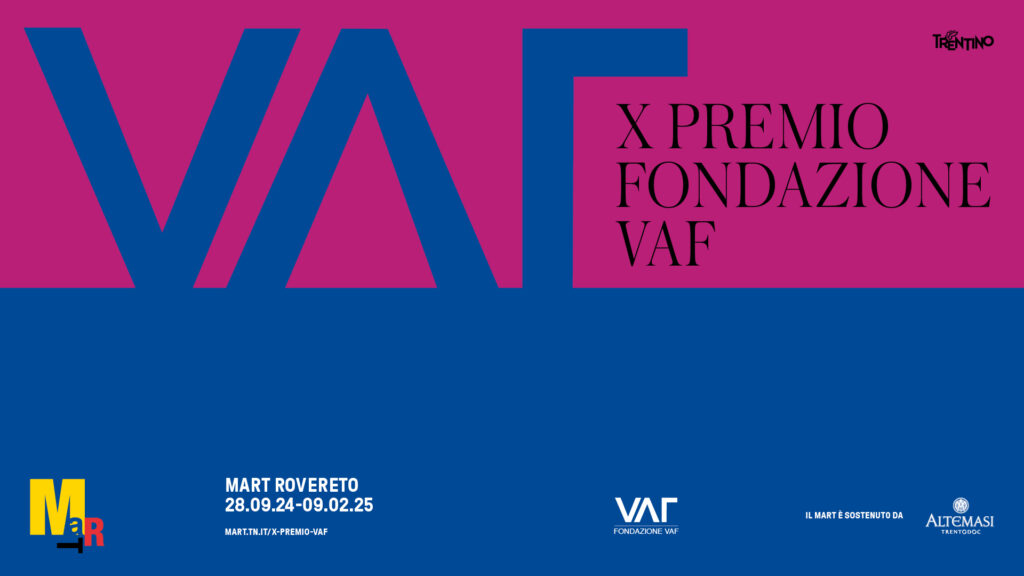
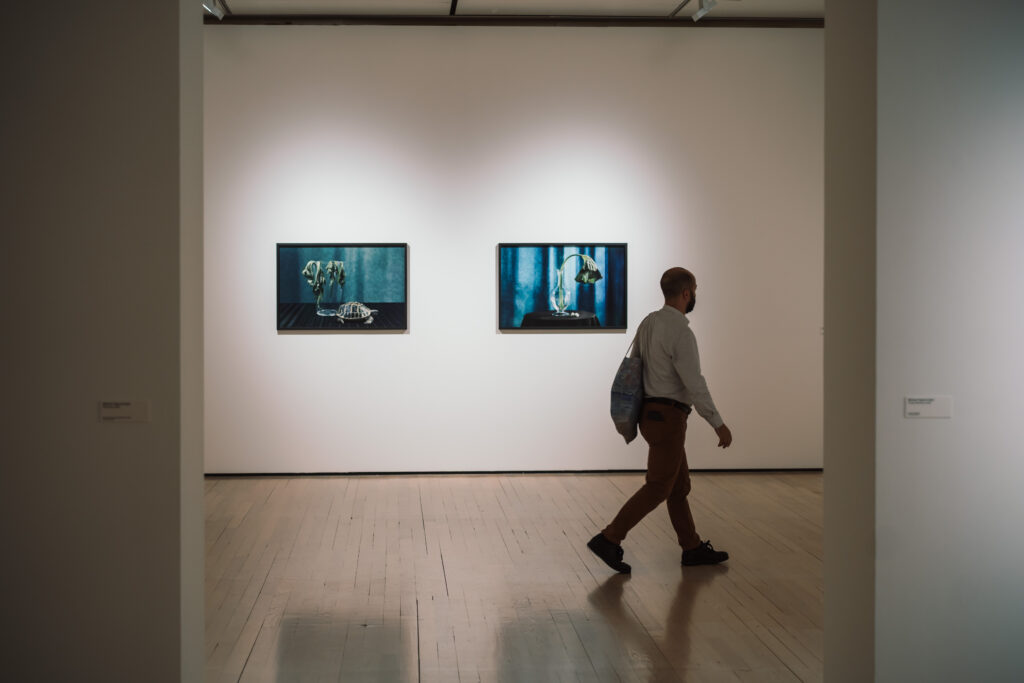
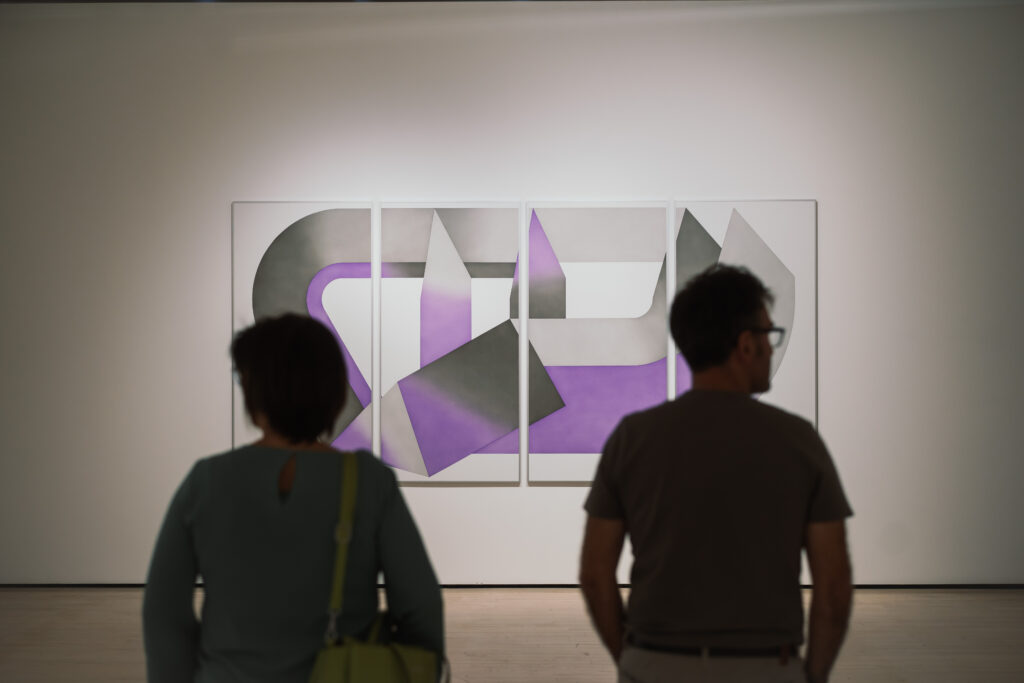
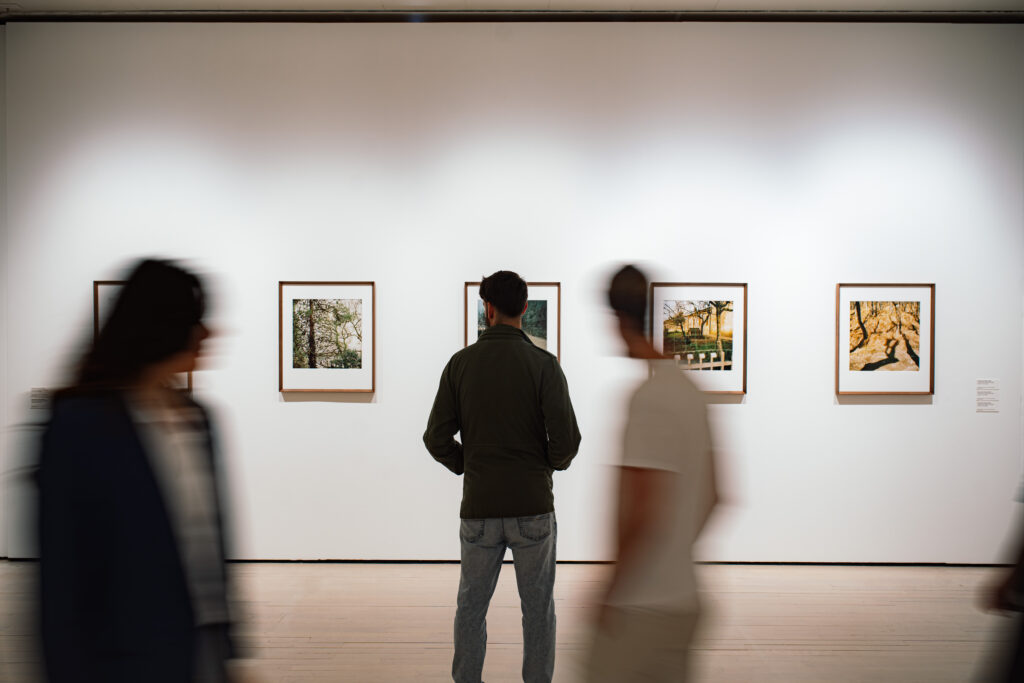


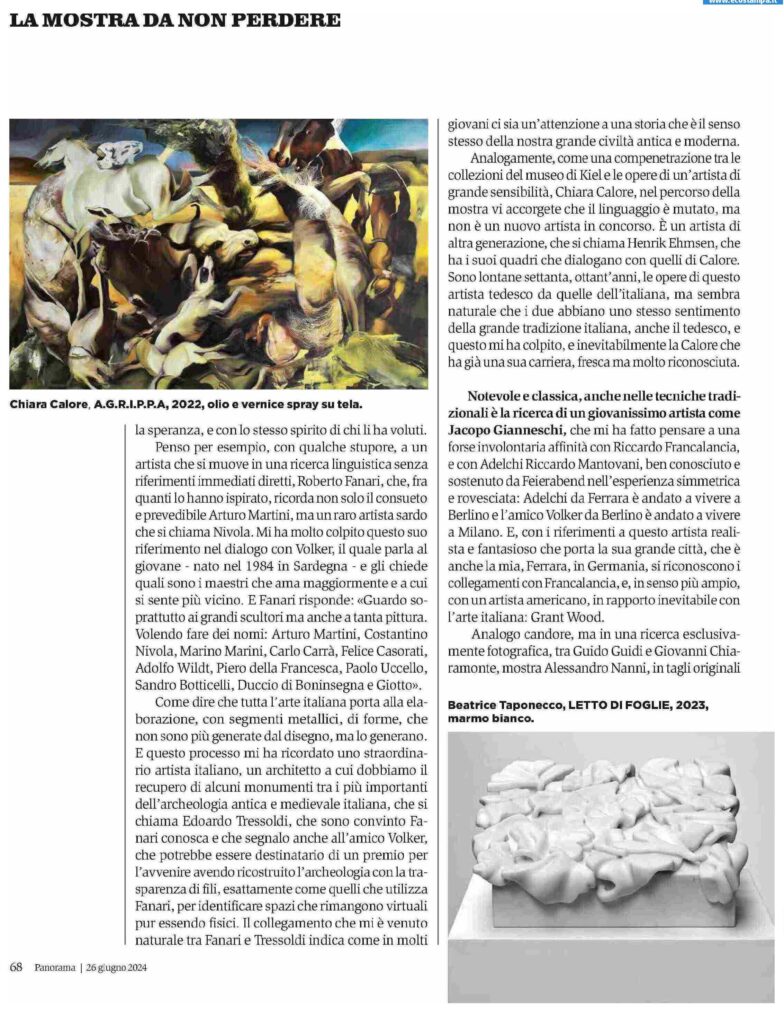




 Italiano
Italiano